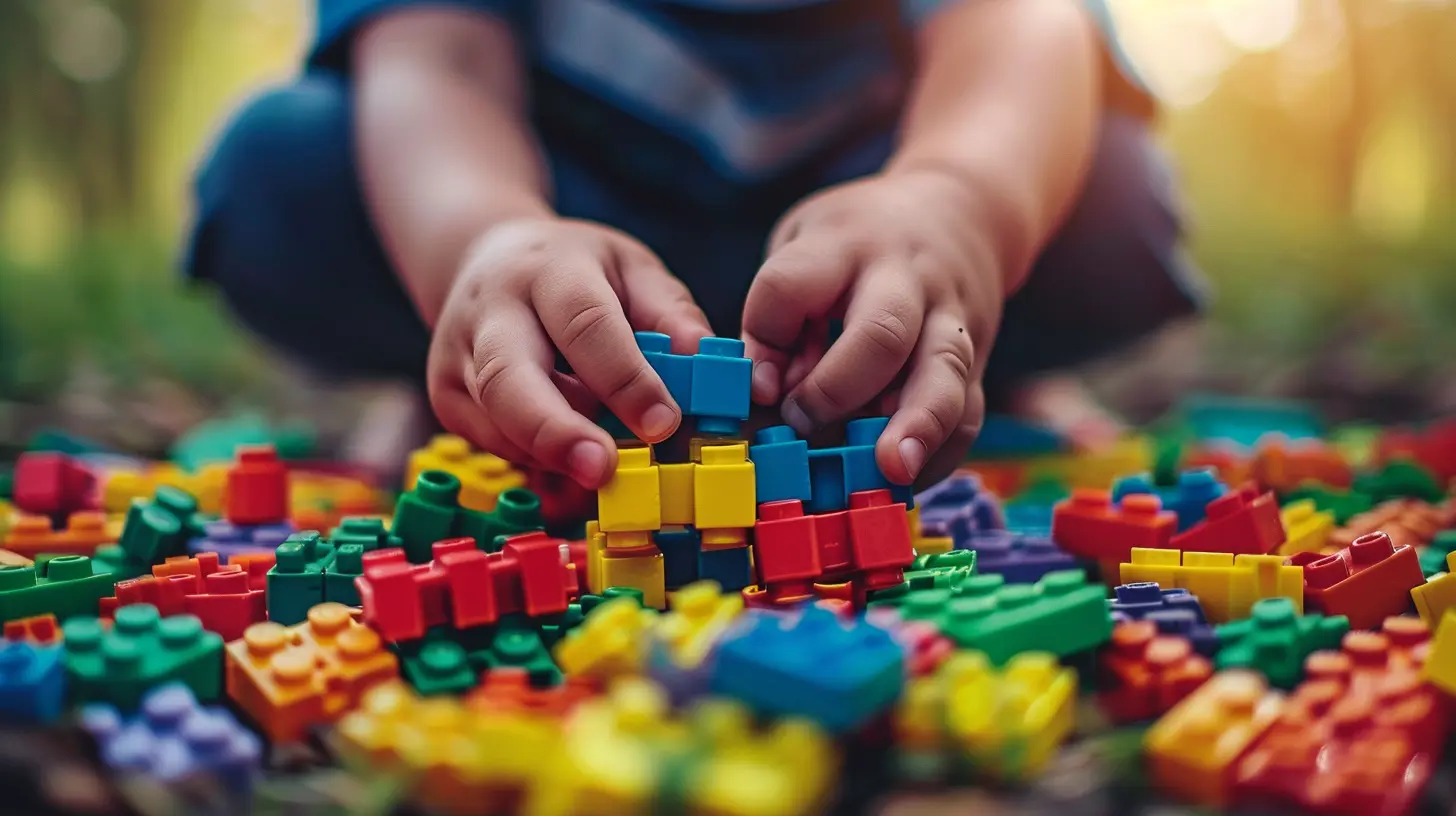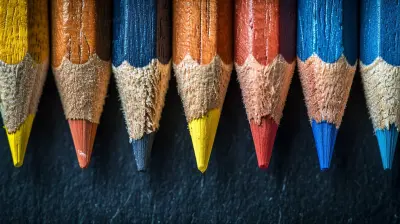Using Real-World Contexts to Teach Problem Solving
16 August 2025
Let’s face it—there’s a huge difference between solving a textbook math problem and figuring out how to split a dinner bill after a night out with friends. One feels robotic, the other feels...well, real. That’s exactly why using real-world contexts to teach problem solving has gained so much attention. It’s not just about getting the right answer anymore; it’s about building thinkers, doers, and life-long learners.
In this article, we're diving deep into how educators can bring classrooms to life by weaving real-world situations into problem-solving lessons. Whether you're a teacher looking for practical tips or a parent curious about better learning methods, this one’s for you.
Why Traditional Problem Solving Falls Short
Remember those word problems in school that started with "If train A leaves the station..."? They were supposed to build problem-solving skills, right? But too often, they're completely disconnected from anything we actually care about.Traditional methods focus heavily on formulas and procedures. Sure, they're important—but they often miss the big picture. They don't always teach how or why the math (or science or even writing) applies to real life.
And let’s be honest… if students don’t see the value, they’ll tune out faster than you can say “pop quiz.”
What Do We Mean by “Real-World Contexts”?
So, what’s all the buzz about using real-world contexts?At its core, it’s about grounding lessons in situations that students might actually encounter—whether now or later in life. That could mean budgeting for a vacation, analyzing climate change data, or figuring out how to make a successful YouTube channel.
These aren't just made-up problems. They're meaningful, relevant, and most importantly, engaging.
The Benefits of Real-World Problem Solving in the Classroom
Let’s break it down. Why should educators take the time to bring the real world into their lessons?1. It Builds Critical Thinking
When students work on problems that don’t have clear-cut answers, they have to think critically. They evaluate, test, revise, and reflect. This kind of thinking prepares them for life beyond school—the messy, complicated, beautifully unpredictable real world.2. It Boosts Engagement
Ever noticed how students light up when they’re working on something that feels real? Whether it’s designing a product or solving a community issue, relevance = interest. And when students are interested, true learning happens.3. It Encourages Collaboration
Real-world problems often require more than one perspective. When students tackle real issues, they’re more likely to work in teams, share ideas, and build communication skills. In a world that values teamwork, this is pure gold.4. It Prepares Students for the Future
Let’s face it—the job market isn’t about memorizing facts. It's about thinking on your feet, solving new problems, and adapting fast. Bringing real-world problems into the classroom is one of the best ways to give students a head start.
How to Integrate Real-World Contexts Into Your Teaching
Alright, so how do you actually do this?It might sound like a huge shift, but implementing real-world problem solving can be surprisingly manageable. Here are some practical strategies.
1. Start Small, But Think Big
You don’t need to redesign the entire curriculum overnight. Start with one unit or even one lesson. Let’s say you're teaching fractions—why not cook something in class and actually measure ingredients? Boom. Math and life skills, all in one.2. Tap Into Current Events
News stories, viral trends, local community issues—these are gold mines for real-world context. Want to teach persuasive writing? Have students write letters to the editor about something happening in their town.3. Use Project-Based Learning (PBL)
PBL is all about diving deep into complex, real-life problems. It might mean researching how to improve recycling in the school or designing a prototype for a flood-resistant house. The goal? Give students a meaningful task that mirrors what professionals might do.4. Invite Guest Speakers
Bringing in professionals—engineers, chefs, journalists, you name it—can connect the dots between classroom learning and real-world applications. Plus, nothing beats hearing about real challenges from someone in the field.5. Simulate the Real World in the Classroom
Set up scenarios that mimic real-life situations. Want to teach budgeting? Have students plan a mock birthday party with a set amount of money. Want to teach decision-making? Simulate a town hall debate on a local issue.Real-World Contexts Across Different Subjects
Here’s the cool part—this approach works in every subject. Let’s take a quick tour.Math: Beyond the Hypothetical
Instead of solving for “x” in a vacuum, students can create business plans, predict sports statistics, or track personal finances. Suddenly, math has purpose.Science: Making It Matter
Use environmental issues, health questions, or tech innovations as jumping-off points. Ask students to analyze water samples or test different materials for insulation. It's science that matters to them.English Language Arts: Words With Impact
Have students write blogs, create podcasts, or pen letters to local businesses. It’s writing with a purpose—not just for a grade.Social Studies: Citizens in Action
Simulate elections, debate policy issues, or investigate local history. Students become active participants, not just passive recipients of knowledge.Art & Music: Expression in Context
Design logos for imaginary start-ups, create protest posters, or compose music for school events. Art gets meaning when tied to purpose.Challenges to Expect (and How to Handle Them)
Okay, real talk—it’s not all sunshine and high-fives. Bringing real-world contexts into teaching comes with its challenges.Time Constraints
Let’s be honest—teachers are stretched thin. Good news? Even short, 15-minute real-world activities can make a difference. It’s not about adding more; it’s about teaching smarter.Assessment Hurdles
Standardized tests don’t always measure real-world thinking. But you can still assess creativity, collaboration, and critical thinking through rubrics, reflections, and presentations.Curriculum Pressure
Feeling boxed in by strict standards? Here’s the trick: find natural overlaps. Most standards allow flexibility, especially in how content is delivered.Success Stories: When Real-World Problem Solving Works
Let’s bring it home with a few inspiring examples.The Solar Oven Project
A 5th-grade class in California designed solar ovens using everyday materials. They had to calculate angles, consider heat reflection, and test prototypes. In the end, they made s’mores—and learned a ton about energy, science, and teamwork.Budget Bosses
A high school economics class ran a full-blown mock economy. Each student had a job, paid taxes, and dealt with financial surprises like car repairs or medical bills. They learned about saving, budgeting, and what “financial literacy” really means.Climate Change Advocates
Middle schoolers partnered with a local nonprofit to create awareness campaigns about climate change. They researched impacts, created infographics, and even presented to the city council. Talk about real-world impact.The Bottom Line
Teaching shouldn't feel like you're preparing kids for a trivia contest. Life isn't a multiple-choice test.Using real-world contexts to teach problem solving doesn’t just make learning more fun—it makes it stick. It prepares students for challenges they’ll actually face, from managing money to solving global crises.
As educators, we’re not just teaching subjects; we’re shaping thinkers, creators, and leaders. And the real world? That’s the best classroom of all.
Final Thoughts: Your Turn
Thinking about trying this in your classroom or with your kids at home? Start small. Pick a relatable problem, get students involved, and see where it takes you. The results might surprise you—and them.Because when learning mirrors life, everyone wins.
all images in this post were generated using AI tools
Category:
Problem SolvingAuthor:

Monica O`Neal
Discussion
rate this article
1 comments
Sophie Butler
Harnessing real-world contexts in problem-solving instruction is not just effective; it’s essential. By bridging theory and practice, educators empower students to tackle genuine challenges, fostering critical thinking and innovation. Let’s prioritize authentic learning experiences for impactful education.
August 19, 2025 at 3:25 AM

Monica O`Neal
Thank you for your insightful comment! I completely agree that integrating real-world contexts is vital for effective problem-solving instruction. Authentic learning experiences not only enhance critical thinking but also prepare students for real challenges ahead.


